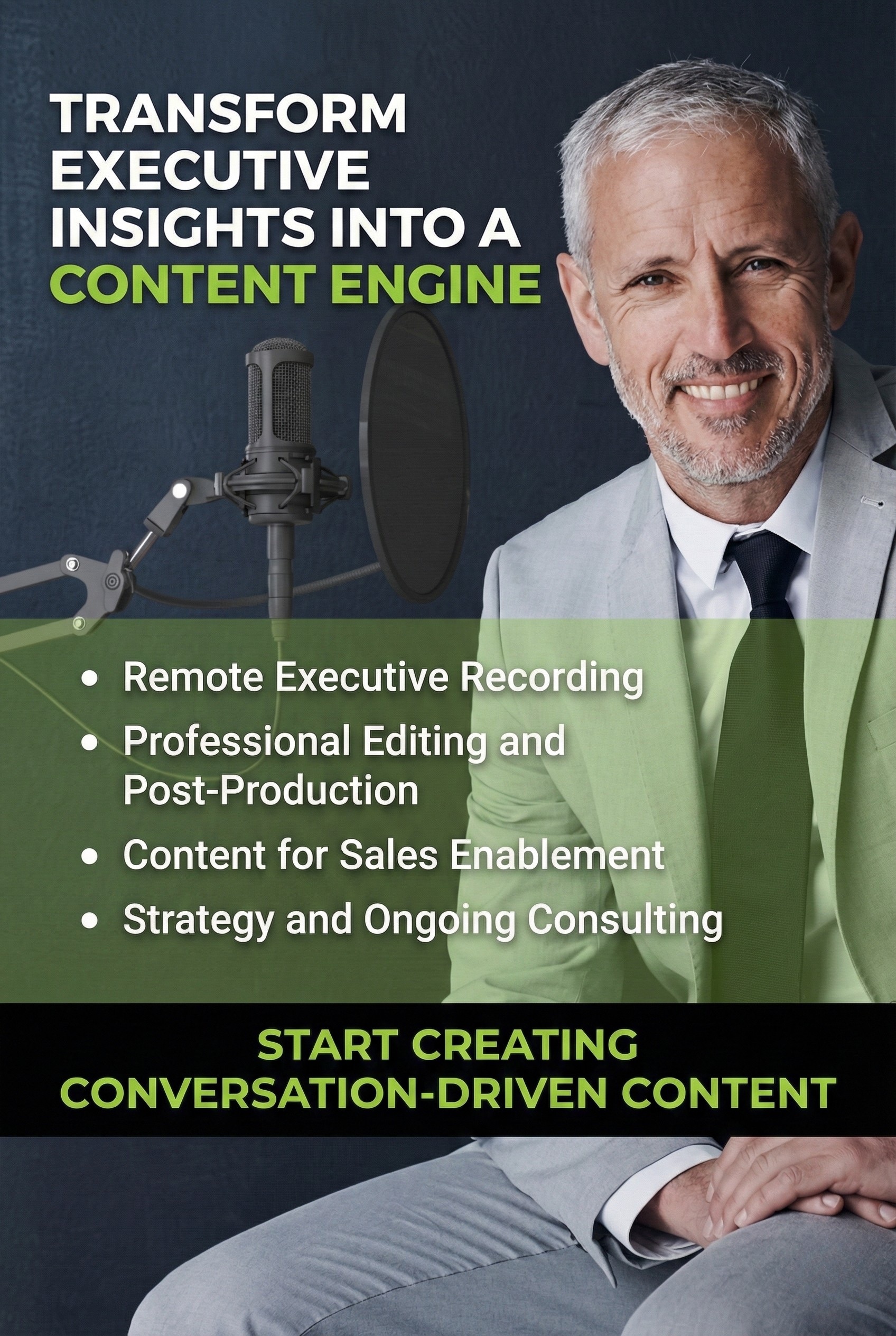Audio-only podcasts and video podcasts are two completely different types of content. They target different audiences and are consumed in different ways. It is for these reasons that you should not consider one format over the other. Instead, focus first on the format that reaches your target audience more often, and then add on the other.
To reach the broadest audience, you will want to eventually do both. The good news is, that you can capture the content for both at the same time. The difference is in the post production and the distribution method of each.
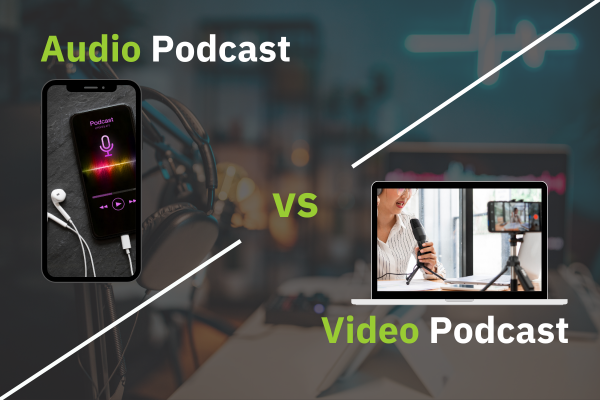
Production of audio podcasts vs video podcast production
The production of an audio podcast primarily revolves around sound quality and the conveyance of information purely through audio. Your hardware necessities are relatively simple: a good quality microphone, an audio interface or web recording platform, and headphones.
Editing software like Audacity or Adobe Audition allows for the manipulation of audio files, cutting out mistakes, adding sound effects or background music. For simple podcasts with less critical content and fewer moving parts, online editing tools like Descript may also be used.
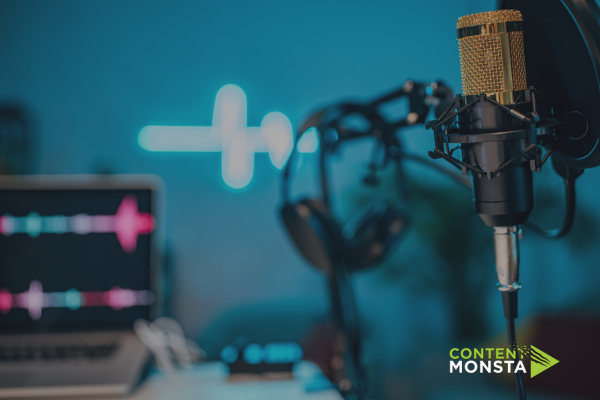
One of the key benefits of audio podcasts is the flexibility they provide. Listeners can engage with them during commutes, workouts, or while multitasking. Therefore, the primary focus should be on creating compelling content that can hold the listener’s attention without visual aids.
Post-production in audio podcasts primarily involves audio editing, balancing, and potentially adding sound effects or music. It’s a straightforward process compared to video editing, usually requiring less time and fewer resources.
Production of a Video Podcast
Video podcasts are actually “video shows” that utilize visual elements in addition to audio, which can make them more engaging but also introduces additional layers of complexity to the production process.
The production of a video podcast requires more sophisticated equipment. In addition to audio equipment, you will need a camera, proper lighting, and potentially even a backdrop or green screen. You also need to consider the visual aesthetics of your filming location.
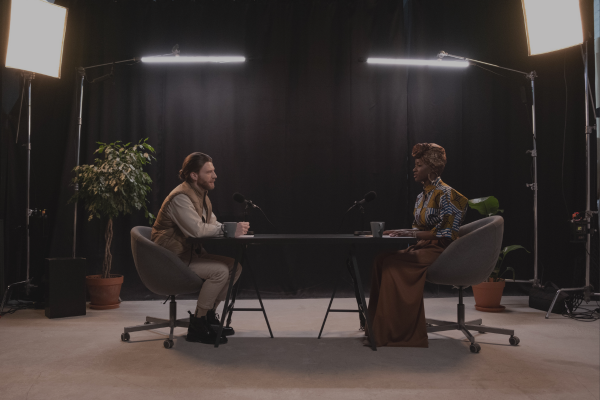
Post-production for video podcasts can be significantly more time-consuming and complex. This involves video editing, which requires more intricate software like Adobe Premiere Pro or Final Cut Pro. The editing process can involve cutting and splicing footage, adjusting lighting and color, adding transitions, and syncing audio. It’s also more resource-intensive, often requiring more powerful computers to handle video files.
While there’s no denying that video podcasts require more resources and effort, they can provide a richer, more engaging experience for viewers, especially when it comes to complex topics or content that benefits from visual aids.
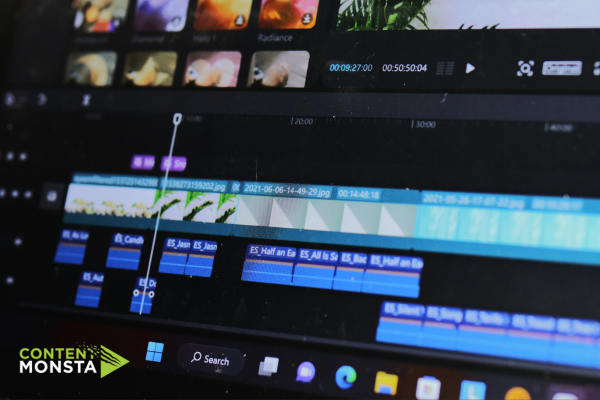
Distribution of an audio podcasts vs video podcasts
In terms of audio only podcast distribution, several platforms exist such as Apple Podcasts, Spotify, Google Podcasts, etc., where you can upload your finished product. The RSS feed feature provided by these platforms enables easy distribution to multiple outlets simultaneously.
Distribution platforms for video podcasts include YouTube, Vimeo, and sometimes even social media platforms like Facebook and Instagram. The selection of a distribution platform can depend on the demographics of the target audience and the nature of the podcast itself.
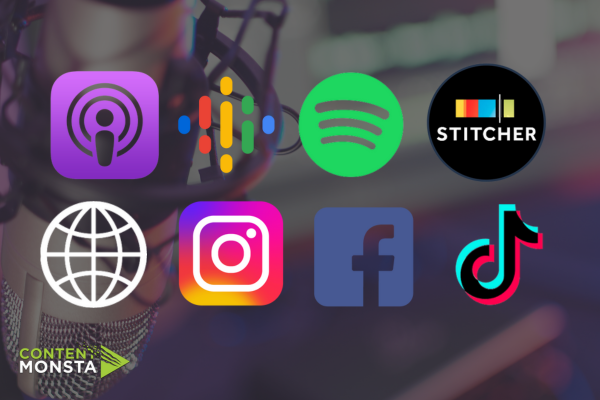
The Wrap
Ultimately, the decision it should not be audio podcast vs video podcast. The choice between an audio podcast and a video podcast will depend on your content, audience, and resources.
It’s beneficial to start with the format that suits your initial conditions and then expand to the other when possible, allowing you to cater to a broader audience and increase your reach. Both formats can complement each other, offering viewers and listeners a more comprehensive understanding of your content.
Our Remote Video Content Services
Learn about the many ways we can help you scale your video content production.

Remote Producer
Our producers work with your video subjects in real-time. They coach delivery, assist with technical setup, and work to get the best content out of every recording session.
Without having a crew come on site, we are still with you, LIVE, every step of the way.
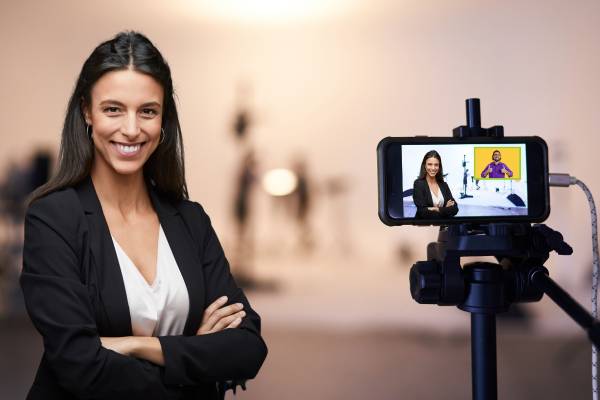
Remote Studio Lite
We have developed small user-friendly video kits that can be set up in minutes, remotely controlled by our producers, and will increase the quality of your video recording to professional standards.
Keep the kit ready and record studio-quality videos with our producers any time!
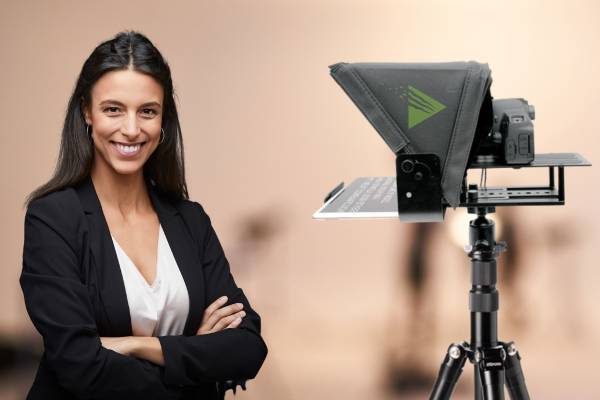
Remote Studio Pro
For a polished in-studio look, even in your office, our Remote Studio Pro kits allow for the highest quality corporate video production.
These kits come fully supplied with teleprompters for professional delivery whenever you need professional video.

Video Request Service
We'll send a video request link so that your customer, expert, or executive can self-record and have the video automatically uploaded to us.
Scale testimonial, user experience and thought leadership videos by capturing footage from your community and peers in minutes.


